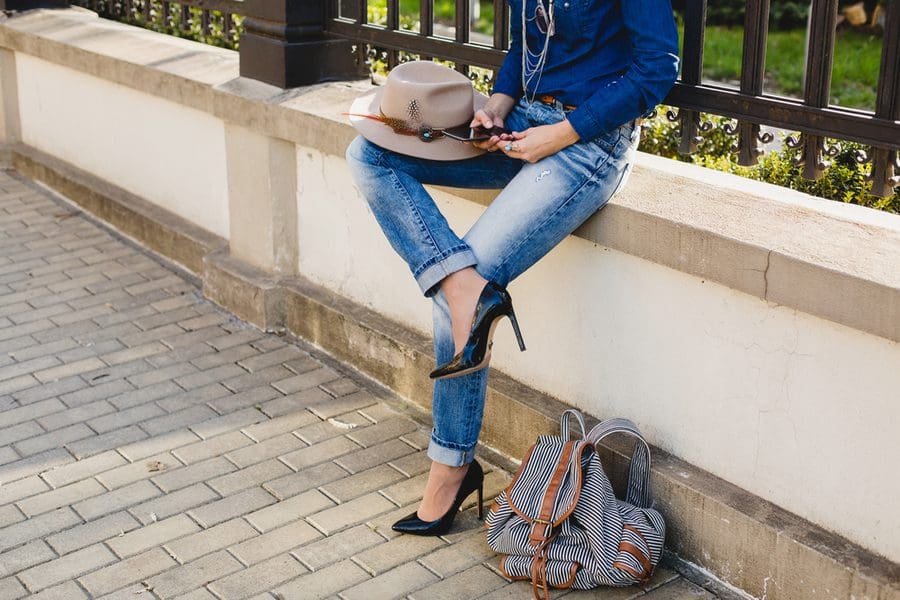Imagine waking up and planning the perfect ensemble of your favorite denim jeans, a crop top, and blazer and heading out for the day. Then you leave the house, and find out you have to pay a fine for your outfit, because wearing pants as a woman is illegal. Yeah, illegal.
It wasn’t that long ago that women in the U.S. could be fined or even jailed for wearing pants—as recent as 1938. In France, it was technically against the law (though not enforced) to “dress like a man” until 2013. So let’s take a moment to honor the women who fought for our privilege to wear some of our favorite clothing: jeans.
Pre 1850
Historically, womenswear in America was all about accentuating the body and had nothing to do with functionality. Think corsets, crinolines, and steel hoops. These fashionable garments could be downright dangerous. Women laced corsets uncomfortably tight to cinch in waistlines, and crinolines could be highly flammable. Hoop skirts made it impossible for women to remove clothing quickly enough if their crinolines caught fire, leading to several unfortunate and untimely deaths.
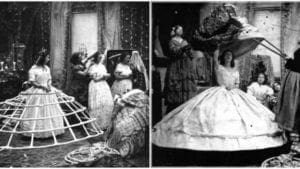 (image)
(image)
1850 – 1920
By the 1850s, bloomers became popular among Women’s Rights activists. Amelia Bloomer promoted the freedom and comfort of the garment in her feminist newspaper. Women were also encouraged to practice mild but daily physical activity and had a loose equivalent of workout clothes.
By 1911, Paul Poiret, a French couture designer, brought the “jupe culotte” to center stage. Only the trendiest women wore these avant-garde pants. Around 1918, Levi Strauss created the Freedom-Alls. Freedom-Alls implied both freedom from WWI and freedom in women’s choice of clothing. These practical suits became a hit and, in the 1920s, Levi Strauss introduced pants for women as separates.
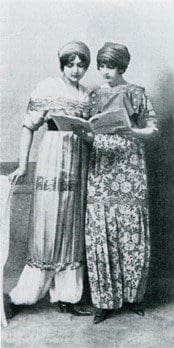
Paul Poiret’s designs (image)
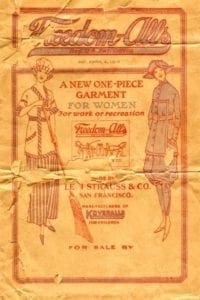
Ad for Levi’s Freecom-Alls (image)
The ’20s also brought Coco Chanel’s take on suits. Chanel drew inspiration for these high-fashion outfits from her boyfriend’s suits, which she didn’t hesitate to wear in public. ‘Beach pajamas,’ an early form of vacation wear, were also popular. Oddly enough, women’s pants became acceptable in a vacation setting long before wearing pants became an everyday practice.
1930 – 1970
By the 1930s, screen stars like Marlene Dietrich and Katharine Hepburn were attempting to normalize the idea of women wearing pants. Society, however, was still very far from acknowledging this as the norm. It took women entering the workforce during WWII for functional women’s fashion to be widely accepted.
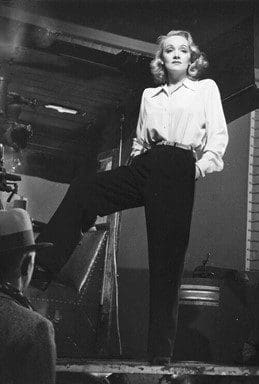
Marlene Dietrich (image)
The traditional values of the 1950s caused the trouser movement to lose some ground. Christian Dior’s iconic ‘New Look’ popularized formal, feminine silhouettes once again. Some women loved these luxurious, form-accentuating pieces, while others protested the backtracking.
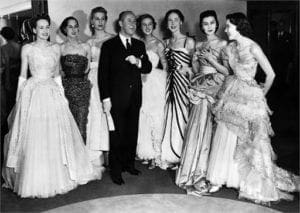
Christian Dior and his designs (image)
The ’60s and ’70s were two vital decades for women’s fashion. The super-feminine silhouettes of the ’50s lost favor. Young women, older women, trendy women, and those who considered themselves ‘old-fashioned’ were all wearing pants in some form or another.
Today
The idea of women wearing pants is mostly normalized – and we say “mostly” because it’s not completely normalized. Pants are still a power play, especially in the political sphere. Look at how women in power—women such as Hillary Clinton, Kamala Harris, and Michelle Obama—present a strong and authoritative image by choosing to “dress like a man.”
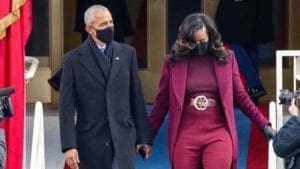 (image)
(image)
The next time you get dressed or find yourself planning the perfect outfit, remember how many women walked so you could run. Being arrested for wearing a basic garment seems ridiculous to us now, so it’s easy to take wearing pants for granted. Clothes are an expression of how we view ourselves and how we want the world to view us, so the next time you put on a pair of pants, consider the significance and power behind that simple act.
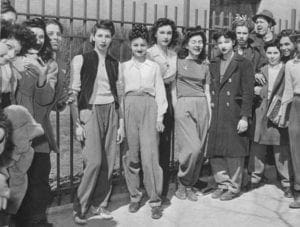 (image)
(image)

